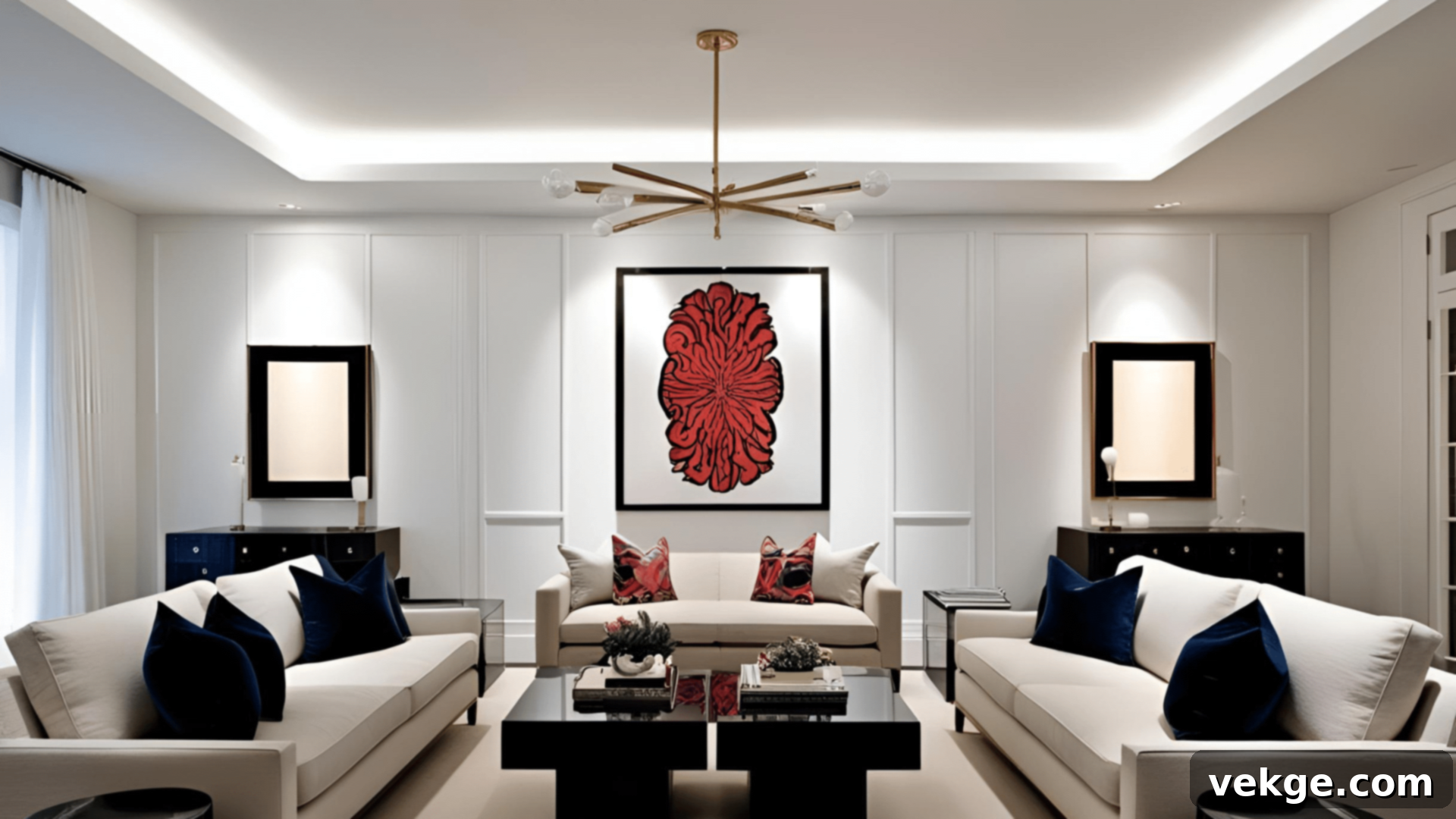Mastering Emphasis: Create Stunning Focal Points in Every Room
Have you ever stepped into a room and felt an immediate connection to a specific element, something that just draws your eye and holds your attention? That, right there, is the magic of emphasis in interior design – a fundamental principle that elevates ordinary spaces into truly memorable and inviting environments. Many homeowners find themselves grappling with rooms that feel bland, disconnected, or lacking a distinctive character. Without a clear focal point, spaces can appear unfocused, leaving a visitor feeling unanchored and the room failing to make a lasting impression.
Strategic emphasis, skillfully applied through elements like color, furniture, lighting, or architectural features, is the key to unlocking harmony and character in any space. It transforms a mere collection of objects into a cohesive visual story.
In this comprehensive guide, we will delve into the art and science of creating powerful focal points in every room of your home. You’ll gain practical techniques, understand the psychology behind visual attraction, and learn how to balance attention-grabbing features with the overall harmony and flow of your interior design.
Understanding the Principle of Emphasis in a Room
In the realm of interior design, emphasis is far more than just “making something stand out.” It’s a fundamental principle that orchestrates where the eye travels, establishing a clear visual hierarchy within a space. Imagine it as a visual roadmap, guiding viewers through the room, telling them where to look first, and directing their journey of discovery.
When you successfully create emphasis, you are essentially designating a “star” element, around which all other elements play crucial, supporting roles. This intentional approach ensures that spaces feel purposeful and carefully curated, rather than a haphazard arrangement of items. It gives the room a voice and a story to tell.
Emphasis doesn’t work in isolation; it collaborates seamlessly with other core design principles to forge truly cohesive and impactful interiors:
- Balance: Ensures that your focal point, while prominent, doesn’t overpower the rest of the room. It maintains visual equilibrium, preventing the space from feeling lopsided or top-heavy.
- Harmony: Connects the emphasized element to the broader design scheme. The focal point should feel like an integral part of the room’s narrative, not an isolated statement, ensuring a sense of unity and belonging.
- Proportion: Determines the scale and visual weight of your focal point relative to other elements and the room’s size. A well-proportioned focal point feels right within its surroundings.
- Rhythm: Creates a smooth, organized flow between the primary focal point and secondary components. This can be achieved through repetition, progression, or alternation of elements, guiding the eye in a continuous, pleasing movement.
Ultimately, successful rooms achieve a delicate yet powerful balance where emphasis ignites interest without ever sacrificing cohesion. They don’t just make a statement; they tell a complete and compelling design story, inviting occupants to engage with the space on multiple levels.
Why Does Every Room Need a Focal Point?
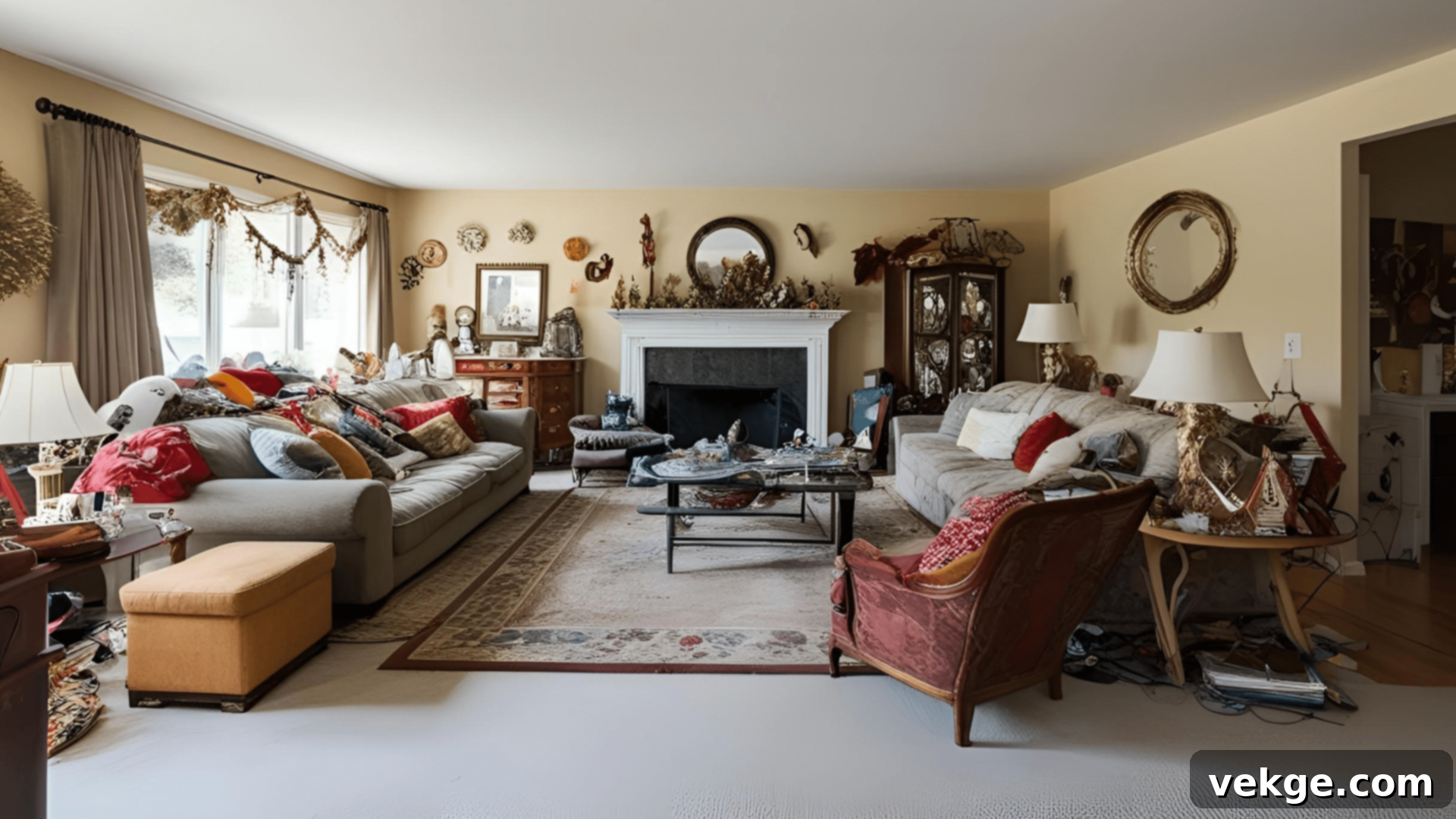
The Psychology Behind Focal Points in Design
The human brain instinctively seeks order and meaning. When we enter a new space, our eyes naturally scan for something to latch onto, a visual anchor that provides a sense of structure and direction. This psychological tendency is precisely why a clear focal point is indispensable in interior design. Without one, the mind struggles to process the environment, leading to feelings of disorientation or a sense that something is missing.
A well-defined focal point alleviates this cognitive load, providing an immediate point of interest. It not only enhances the overall aesthetic appeal of the room but also reassures us, making the space feel intentional, balanced, and welcoming. It’s about creating a comfortable visual resting place.
How Focal Points Create a Sense of Order and Purpose
Focal points are instrumental in making a room feel cohesive and organized. They act as the gravitational center of a space, naturally drawing the eye and helping to anchor the entire layout. Imagine a room without a central point of interest – it can quickly feel chaotic, disjointed, and visually overwhelming, leaving the eye to wander aimlessly without a place to settle.
A strong focal element, whether it’s a dramatic piece of art, a unique architectural feature, or a statement piece of furniture, gives the room its purpose and direction. It dictates furniture arrangement, influences color palettes, and guides the placement of accessories, creating an underlying structure that makes the entire design make sense.
Common Mistakes When Rooms Lack Proper Emphasis
Rooms that lack a clear focal point often feel uninviting, uncomfortable, and frankly, a bit boring. Without a defined point of interest, the eye can’t decide where to rest, leading to a sense of visual noise or emptiness. Common mistakes designers and homeowners make include:
- Overloading the Space: Trying to make everything stand out, which ironically results in nothing standing out. The room becomes a visual cacophony.
- Too Open-Ended Layouts: Furniture and decor are scattered without a central reference point, making the room feel adrift and lacking definition.
- Neglecting Key Features: Overlooking inherent architectural details that could naturally serve as focal points, like a beautiful window or a fireplace.
- Lack of Personality: Without a hero element, the room fails to convey any particular style or character, feeling generic and forgettable.
These missteps can create confusion or unease for anyone in the room, as their eyes search in vain for a specific area to appreciate, leaving them feeling disconnected from the space.
6 Powerful Ways to Create Emphasis in Your Home
1. Using Furniture as a Focal Point
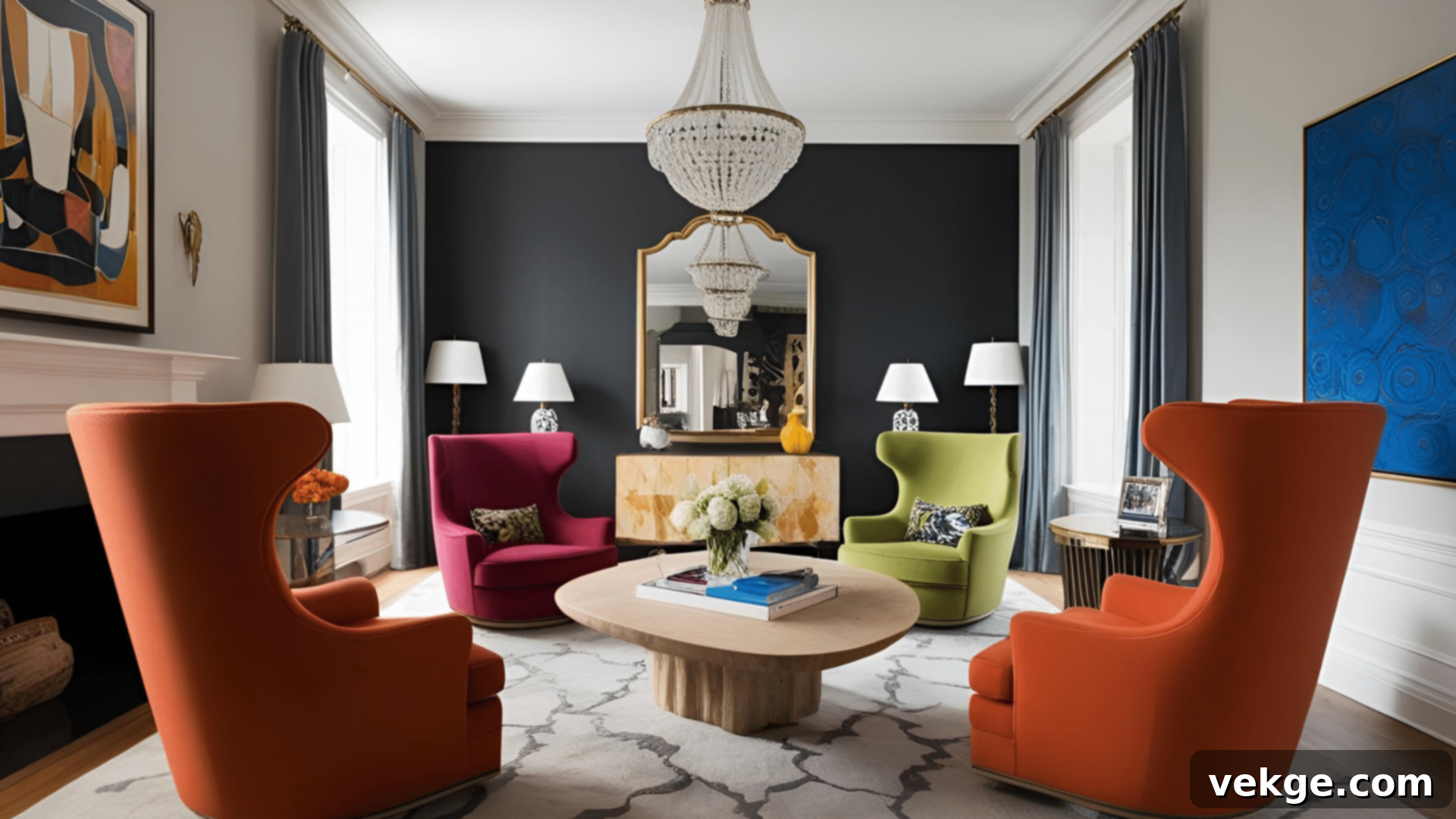
Statement furniture pieces possess an incredible power to command attention and become the undisputed star of a room. Think beyond just a functional item; consider choosing bold, unique items that naturally draw the eye through their form, scale, or distinctive design. Examples include an oversized, plush sectional sofa, an antique armoire in a modern setting, a beautifully carved dining table, or a unique headboard in a bedroom.
The strategic placement of furniture is equally crucial. A sofa centered on the longest wall, two accent chairs framing a window, or a grand piano positioned in a living area can instantly direct the eye and establish the room’s anchor. Experiment with furniture that features unusual shapes, dramatic sizes, or unexpected colors to create emphasis and make a profound statement in your space. Remember, even a single, carefully selected piece can define an entire room’s character.
2. Creating Emphasis Through Color
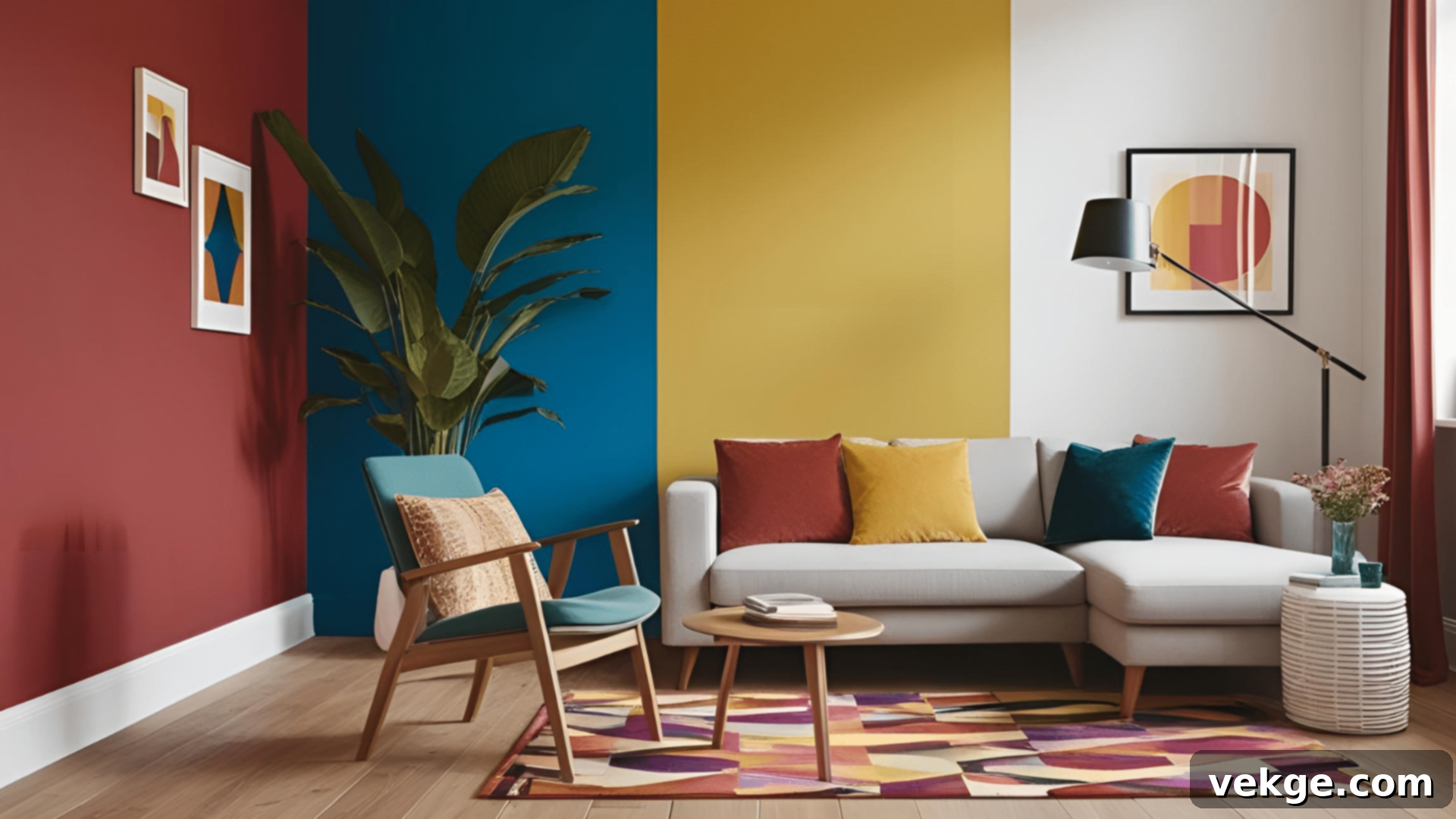
Color is arguably one of the most immediate and effective tools for creating emphasis in any interior. An accent wall, painted in a vibrant hue or a deep, rich tone contrasting with the surrounding walls, immediately draws attention to a specific area or architectural feature. Beyond walls, bold and contrasting colors can be deployed through a single piece of furniture, a large area rug, or a collection of decorative accessories to highlight key features or define zones within an open-plan space.
Understanding color psychology also plays a significant role in how emphasis is perceived. Warm tones like reds, oranges, and yellows can evoke energy, passion, and warmth, naturally drawing the eye. Conversely, cooler tones like blues and greens tend to recede and create a sense of calm. Strategic use of color-blocking techniques can also help to visually separate areas, add depth, and create dynamic visual interest, making certain elements pop against a more subdued backdrop.
3. Lighting as a Tool for Emphasis
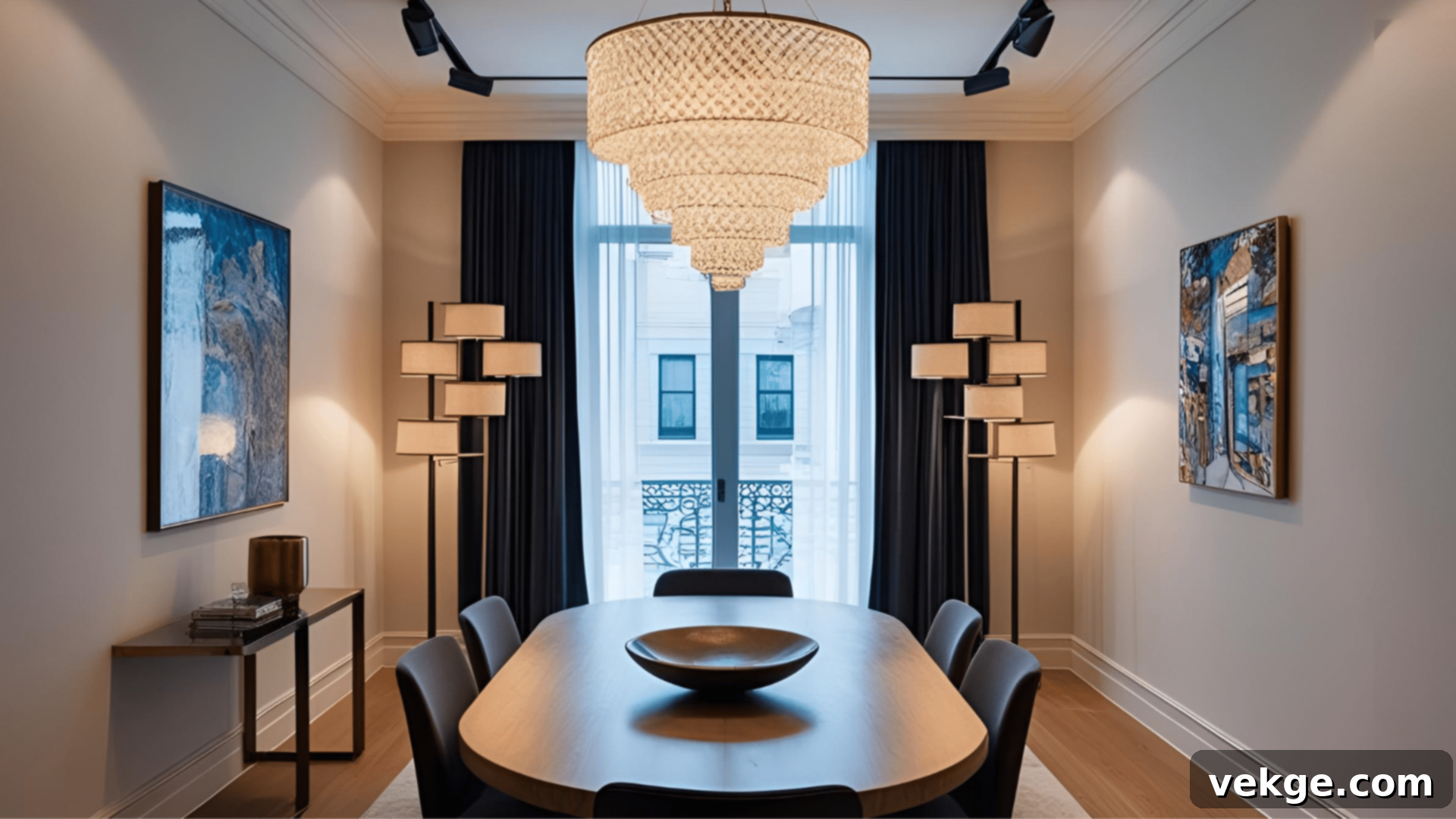
Lighting has an unparalleled ability to transform a room’s ambiance and precisely emphasize certain areas or objects. Statement light fixtures, such as an ornate chandelier, a striking pendant light over a dining table, or a sculptural floor lamp, serve as powerful, eye-catching focal points even when not illuminated. These fixtures contribute significantly to the room’s aesthetic appeal.
Beyond decorative fixtures, directional lighting, such as spotlights, track lighting, or picture lights, can be strategically aimed to highlight artwork, architectural details, or built-in shelving, drawing the eye exactly where you want it. The technique of layering different light sources—combining ambient (general room illumination), task (for specific activities), and accent lighting—adds remarkable depth, dimension, and focuses attention where it matters most.
Don’t overlook the power of natural light either. Strategically positioning furniture or artwork to be bathed in sunlight can naturally illuminate and emphasize key elements, creating a bright and inviting focal point without any artificial aid.
4. Texture, Pattern, and Shape

Incorporating a variety of textures, patterns, and shapes is an incredibly effective way to create emphasis through contrast and sensory appeal. For instance, the juxtaposition of a smooth, sleek leather sofa against a rough-textured brick wall, or a plush velvet throw on a linen armchair, immediately creates visual and tactile interest, making one element stand out against the other.
Bold patterns, such as large-scale geometric designs on wallpaper, intricate floral motifs on an area rug, or a striking animal print on an accent pillow, can instantly become the room’s dominant focal point. These patterns inject energy and personality.
Similarly, using unique shapes—whether they are sharp, modern geometric forms in furniture and art, or soft, organic curves in sculptural pieces and accessories—draws the eye and creates dynamic balance. Mixing these elements adds depth, complexity, and a sophisticated layer to a space, expertly highlighting certain features and making the room feel multi-dimensional.
5. Decorative Accents and Accessories
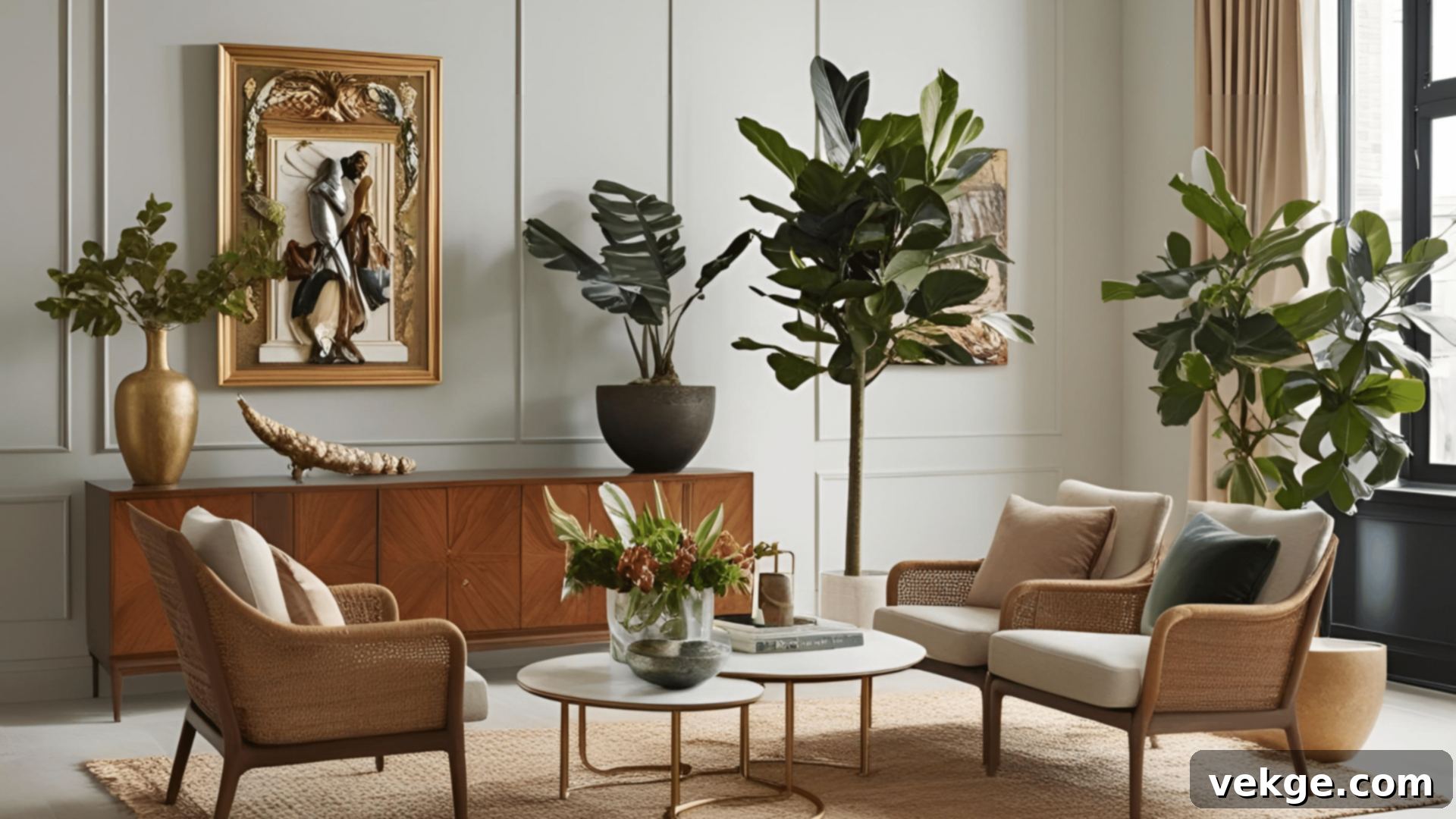
Decorative accents and accessories are the finishing touches that often provide the most accessible and flexible ways to add emphasis. A thoughtfully chosen art piece—be it a large painting, a striking sculpture, or a curated gallery wall—can instantly serve as a powerful focal point, drawing the eye and setting the tone for the entire room.
Plants and natural elements, such as a tall indoor tree, a dramatic floral arrangement, or a collection of succulents, bring life, color, and natural attention to specific corners, tables, or shelves. Mirrors are another versatile accessory; an oversized, ornate mirror can work wonders as a statement piece, not only reflecting light and creating a sense of expanded space but also becoming a stunning visual anchor.
Thoughtfully displaying collections, whether they are antique vases, colorful books arranged by hue, or treasured travel souvenirs, adds character, storytelling, and a clear direction to a room’s design, transforming everyday objects into captivating points of interest.
6. Structural Elements

Often, a room comes with inherent structural features that are prime candidates for becoming focal points. Elements such as a grand fireplace, a large bay window with a stunning view, exposed ceiling beams, or an arched doorway naturally command attention. Emphasizing these existing features through careful styling, lighting, or color can elevate them into the room’s central visual interest.
Where such features are absent, you can introduce structural emphasis. This could involve creating an accent wall with unique paneling or wallpaper, building in shelving units that frame a seating area, or even installing decorative columns. These additions not only create visual interest but also help to define the space and provide a sense of architectural grandeur.
Utilizing these structural features to guide the eye helps to balance the room and ensures it feels cohesive and intentional. Even subtle architectural details, such as elaborate crown molding, wainscoting, or a dramatic staircase, can enhance a space by providing an inherent sense of structure and sophisticated emphasis.
Emphasis in Different Design Styles
Modern and Minimalist Approaches to Emphasis
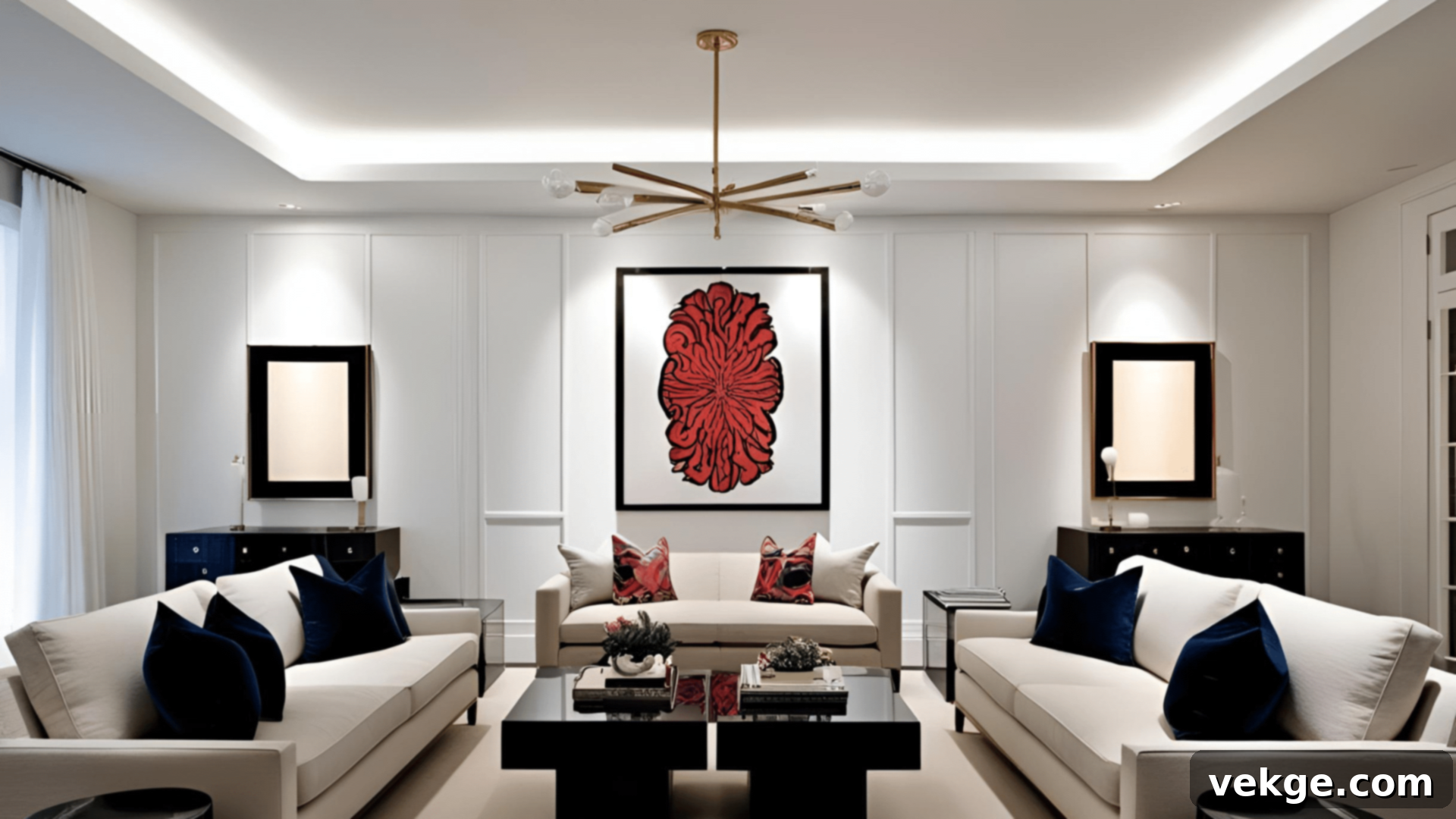
In modern and minimalist designs, emphasis is meticulously placed on simplicity, clean lines, and functionality. The approach is often “less is more,” but that “less” is carefully chosen to make a powerful statement. Focal points in these styles are typically singular and impactful, often focusing on one exquisitely designed piece, such as a sleek, sculptural sofa, an oversized abstract painting, or a unique, architectural light fixture. The surrounding space is kept uncluttered and pared back, allowing the chosen focal point to truly breathe and command attention.
The use of neutral color palettes—grays, whites, and blacks—with occasional, deliberate pops of contrasting color ensures that the atmosphere remains calm, organized, and sophisticated, enhancing the prominence of the emphasized element without distraction. Negative space itself often becomes a key design element, drawing the eye to the perfectly placed focal point.
Traditional and Classic Emphasis Techniques
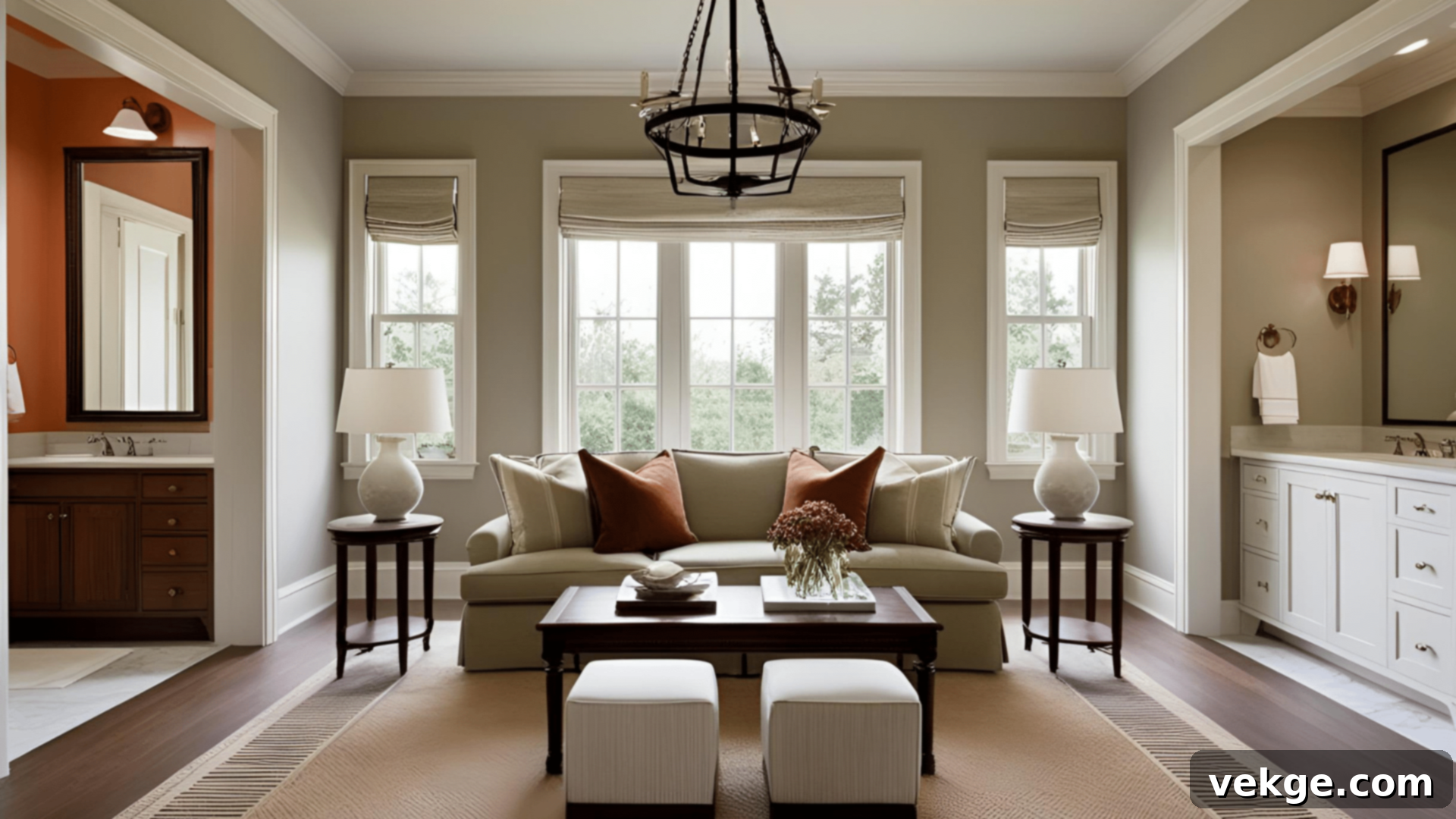
Traditional and classic designs often leverage a sense of grandeur, history, and established elegance. Emphasis in these styles frequently derives from symmetry, ornate antique furniture, and elaborate decorative elements. Focal points are commonly inherent architectural features like a majestic fireplace, a crystal chandelier hanging above a grand dining table, or a large, gilded mirror that reflects light and amplifies the room’s splendor.
Rich color palettes, detailed woodwork (such as intricate molding or paneling), and luxurious patterned fabrics (damasks, brocades, toile) are used to draw attention to these central elements. The overall space maintains a balanced, formal, and timeless appeal, with the focal point serving as the dignified anchor of the room’s heritage-rich narrative.
Eclectic and Maximalist Methods for Creating Focal Points
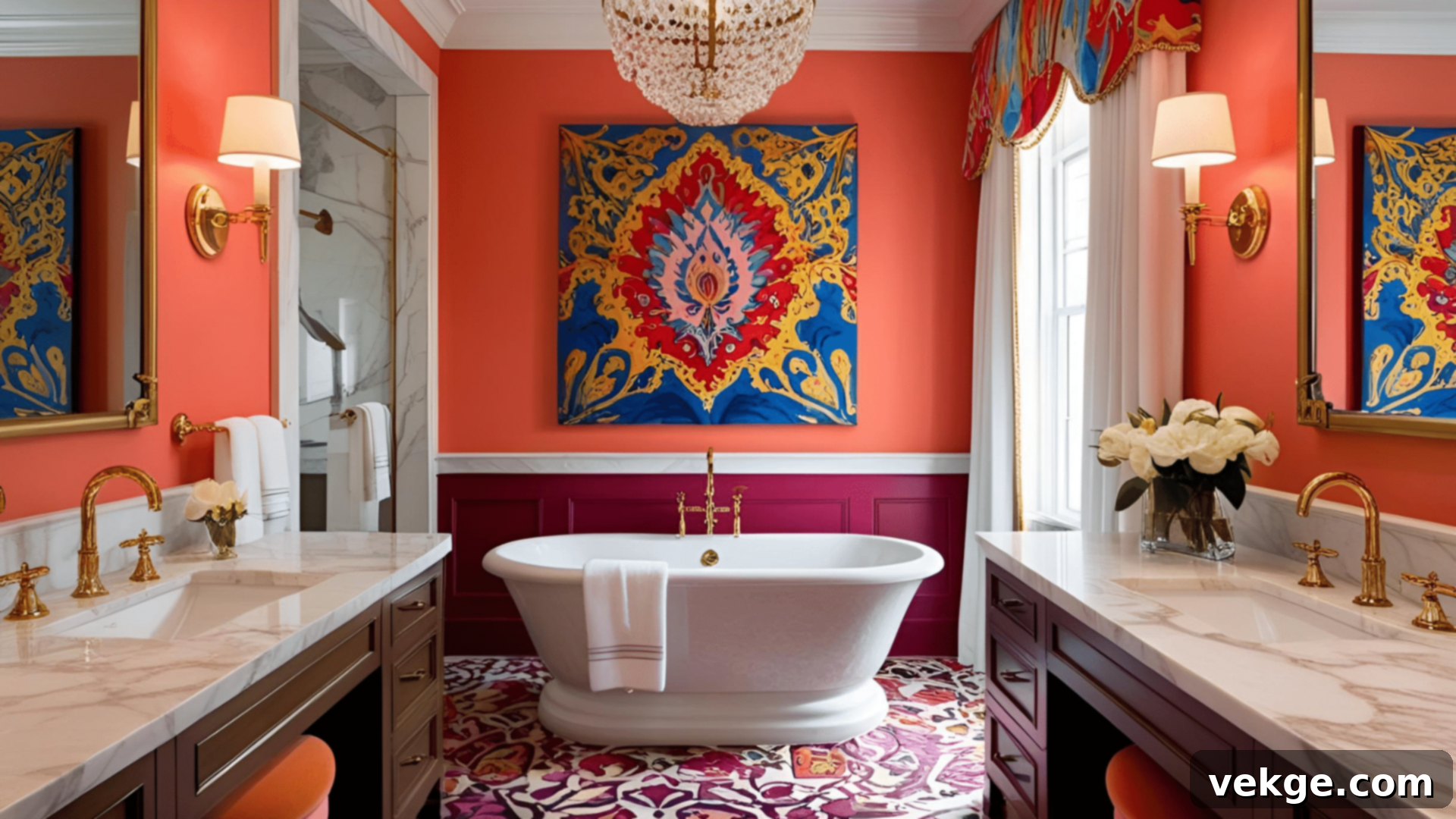
Eclectic and maximalist designs are vibrant, expressive, and thrive on boldness, contrast, and a sense of curated abundance. Unlike minimalist styles that might feature a single focal point, these approaches often create multiple points of interest, where each element is chosen for its unique story and contribution to the overall visual tapestry. Emphasis is achieved through the playful use of vibrant colors, a rich variety of textures, and unique, statement furniture pieces gathered from diverse styles and eras.
Layering items—from art and textiles to accessories and furniture—and mixing styles are hallmark techniques. The eye is encouraged to move dynamically across the room, discovering new delights at every turn. While there might not be one single, dominating focal point, the cumulative effect of these carefully chosen and arranged elements creates a lively, dynamic, and deeply personal space, where every corner offers something captivating.
Cultural Influences on Emphasis in Design
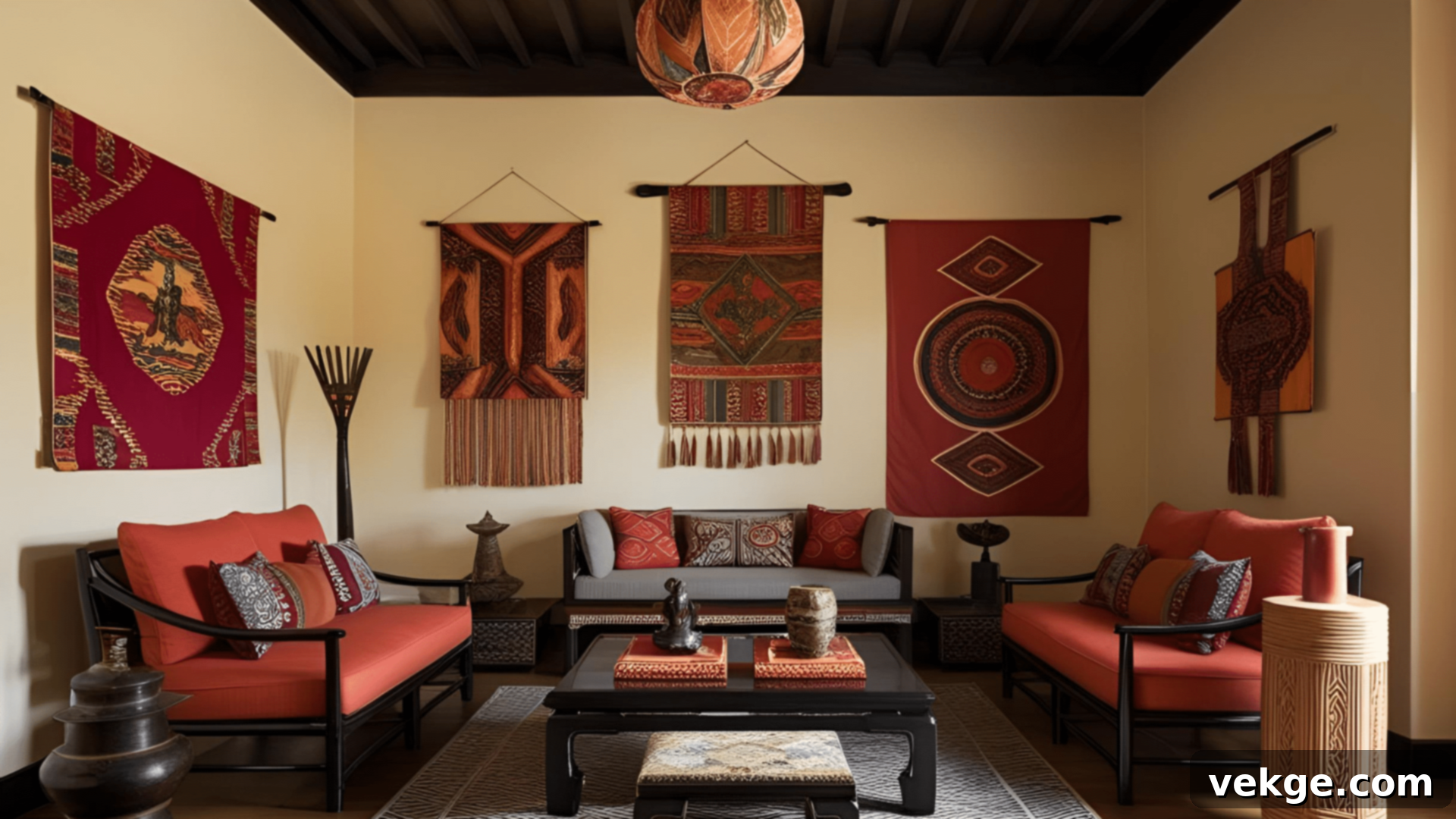
Cultural influences profoundly shape how emphasis is conceived and executed in design, highlighting specific elements and aesthetics from various global traditions. For example, a home inspired by Japanese design might emphasize a single, carefully chosen bonsai tree, a piece of calligraphy, or a minimalist tatami mat area, celebrating simplicity and nature. In contrast, African-inspired designs might center on distinctive handcrafted textiles, tribal masks, or earthy pottery, all rich in pattern and texture.
Middle Eastern aesthetics often emphasize intricate geometric patterns, luxurious fabrics, and ornate lanterns, creating a sense of warmth and mystique. Incorporating authentic cultural artifacts, traditional patterns, distinctive color palettes, or unique craftsmanship brings a profound sense of character, depth, and meaning to a space, tying its design directly to a rich cultural heritage and making those elements powerful focal points within the room.
DIY Projects to Create Emphasis in Your Home
Weekend Projects to Create New Focal Points
You don’t need extensive renovations to introduce fresh and exciting focal points into your home. Simple DIY projects can make a significant impact in just a weekend. Consider these ideas:
- Statement Accent Wall: Choose a wall and paint it a bold, contrasting color, or apply an eye-catching wallpaper. This instantly transforms a plain surface into a dynamic focal point.
- Feature Light Fixture Installation: Replace an ordinary ceiling light with a dramatic chandelier or a set of unique pendant lights. This requires some basic electrical knowledge but can be a game-changer.
- Custom Shelving Unit: Build floating shelves or an easy-to-assemble bookcase and arrange it with curated books, plants, and decorative objects. This creates an organized and attractive display that draws the eye.
- Gallery Wall Creation: Gather your favorite artwork, photos, and mirrors, and arrange them into a cohesive gallery wall. This personalizes your space and creates a vibrant visual narrative.
These projects are manageable to complete over a weekend and can profoundly modify a space without requiring major investments or professional help.
Budget-Friendly Emphasis Techniques
Creating impactful emphasis in your rooms doesn’t require a large budget. Many ingenious and affordable techniques can make a room stand out:
- Vibrant Throw Pillows & Blankets: Swap out neutral pillows and throws for ones with bold colors, interesting textures, or unique patterns. These small items can inject personality and draw the eye to a sofa or bed.
- Affordable Art & Prints: Hunt for budget-friendly prints online, at local markets, or even create your own. Frame them creatively to create a stunning gallery wall.
- Repurposing Old Furniture: Give an old chest of drawers or a forgotten chair a new lease on life with a fresh coat of paint in a striking color, or add new hardware to make it pop.
- Decorative Object Groupings: Arrange a collection of affordable items—like varying sizes of glass vases, a cluster of candles, or a stack of interesting books—on a coffee table or mantelpiece to create a mini focal point.
Small changes, thoughtfully executed, can collectively make a huge impact on your room’s overall aesthetic and focal points.
Seasonal Changes to Refresh Your Room’s Emphasis
Keeping your space feeling fresh and dynamic is easy by adjusting your focal points with the changing seasons. This allows you to refresh the room’s narrative without major expense or effort:
- Swap Out Textiles: In autumn, introduce plush velvet pillows or a chunky knit throw to emphasize comfort around a fireplace. In spring, switch to lighter linen fabrics and floral patterns to highlight freshness.
- Seasonal Floral Arrangements: A vibrant bouquet of spring flowers, a dramatic arrangement of fall foliage, or festive winter greens can instantly become the centerpiece of a dining table or console.
- Mantle Decor: The fireplace mantel is a perfect canvas for seasonal emphasis. Change out candles, figurines, and small artworks to reflect holidays or seasonal themes.
- Color Accents: Introduce seasonal color palettes through small accessories like decorative bowls, candles, or even a new set of placemats.
These simple swaps help to keep the room’s focus current, giving it a renewed feel and preventing the design from becoming stagnant.
Conclusion
The strategic implementation of emphasis in interior design holds the power to create a lasting impact on your space, offering both artistic appeal and functional clarity. By understanding and learning to highlight key elements such as distinctive furniture, captivating colors, purposeful lighting, and engaging textures, you can effortlessly transform any room from ordinary to extraordinary.
Developing an intuitive eye for natural focal points and the confidence to create them takes practice and experimentation. However, even the smallest, most intentional changes can make a monumental difference in how a room feels and functions.
As you reflect on these powerful techniques, take a moment to truly analyze your own living spaces. Which areas currently lack a clear sense of direction or personality? What potential focal points could you introduce or enhance to make your rooms feel more balanced, inviting, and intentional? Don’t hesitate to implement these strategies in your home. Ready to get started? Try a simple weekend project or swap out a few accessories, and watch your space come vividly to life!
